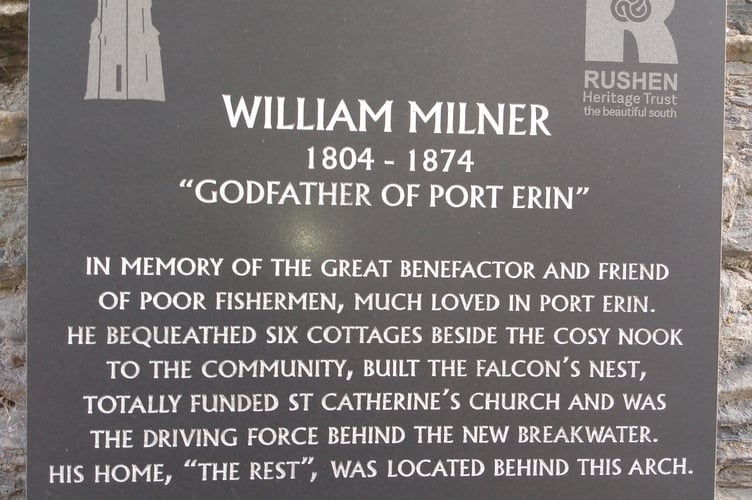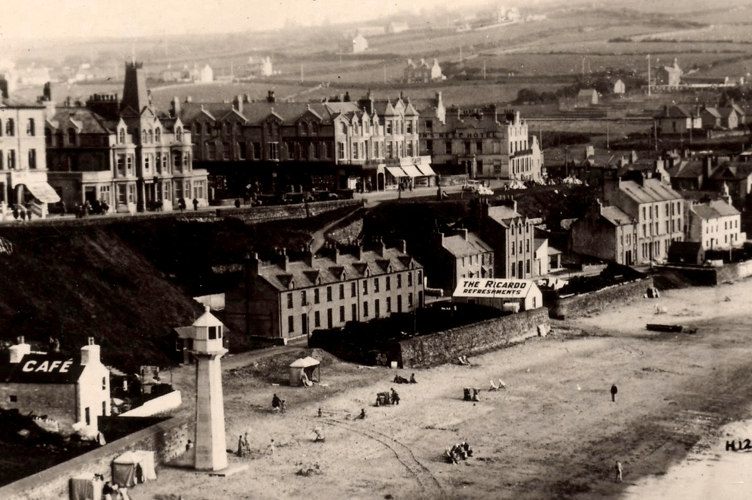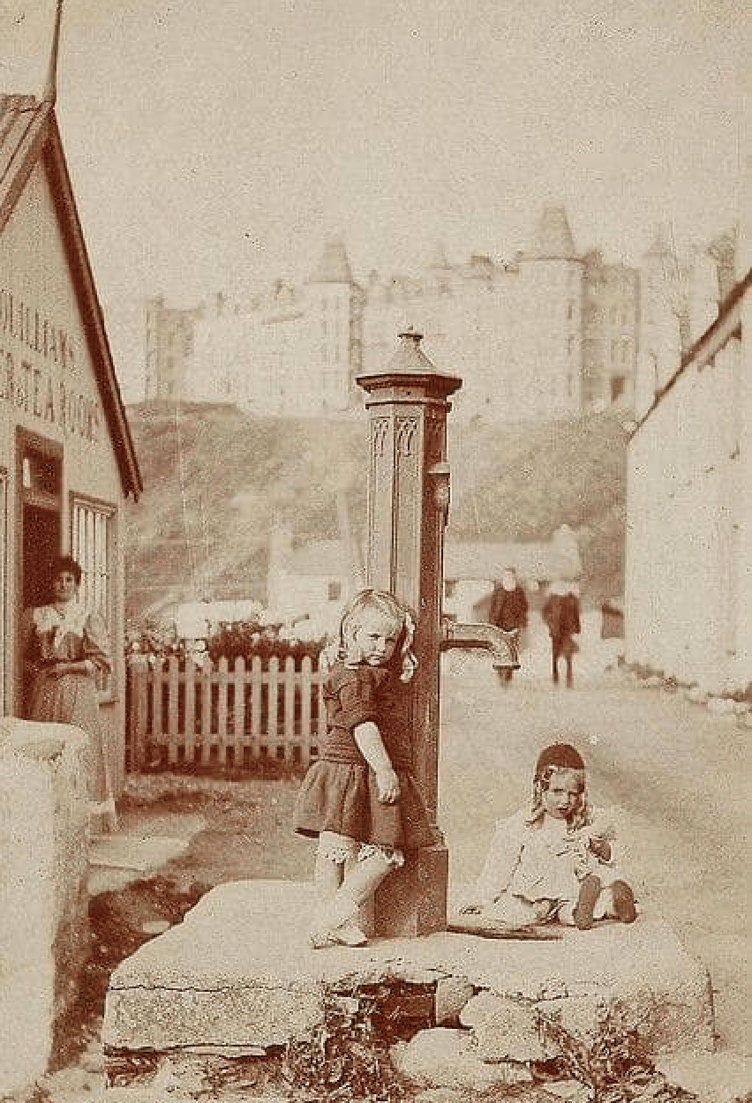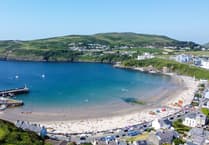In Victorian society, philanthropy was considered good for the soul.
To be able to help those poorer than themselves was morally respectful.
Such an act of philanthropy was to be enacted in Port Erin, of all places, by William Milner whose generosity was made possible by being a partner in the Milner Safe Company, which was at that time the largest manufacturer of fireproof safes in the world.
One of his legacies to Port Erin are the cottages at St Catherine’s Terrace.
William Milner built these cottages in around 1864 on land known as the Brows, which he purchased from the Estate of The Rowaney.
In 1864 Milner was having his retirement home ‘The Rest’ built by a well-established builder from Castletown called Robert Cain.
As Cain had a considerable number of masons and carpenters in Port Erin, it’s thought that he built St Catherine’s Terrace cottages around the same time.
The Rest was demolished in the 1970s. William Milner died in 1874 and his will, dated March 21 1872, stated: ‘I devise (gift) to the vicar of Kirk Christ Rushen aforesaid all those six cottages with land known as Terrace Catharina.’
A portion of the annual rent from the cottages, after maintenance and insurance for the properties against fire, was to pay £25 per annum to the clergyman of St Catherine’s church.
William Milner also purchased the land and built the church which became known as St Catherine’s Church, Port Erin.
Any residue from the rents left after the payment to the clergyman, was to give one shilling every Saturday to seven poor persons of Port Erin. If any residue was left following these Saturday payments, it was to be collected and given to as many of the poor at Christmas Eve as the residue would allow - at a rate of one shilling each.

By 1884, the village of Port Erin was growing fast due to the visitor trade.
A system of foul water drainage was non-existent. The problem got so bad that a Tynwald court committee was appointed.
This included evidence about the state of things at St Catherine’s Terrace. They were not good.
The Church had tried and failed to find a solution to the sewage issue. The main problem being that there was no ‘fall’ in the pipes, as the cottages are nearly at sea level.
Modernisation of the cottages came in the form of electricity in 1933. However, it was not without a little drama.
The contract for installing the cables was given to a Manchester firm by the Isle of Man Electricity Board and the Manchester contractors employed men from Peel to dig the trenches.
On the first day of the work, one man was, in the opinion of the foremen, not pulling his weight. He was warned several times then sacked by 3pm.
This caused some ill feeling with his fellow workers and 19 other men downed tools. The men had all been driven to Port Erin by motor lorry and were now stranded.
An ugly situation was resolved by the local police constable who asked the company officials to take the men back to Peel. The next day men from Castletown were employed in their place.
Further improvements to the cottages were slowly implemented by the Port Erin Commissioners.
In 1949 a loan of £720 pounds was requested for the installation of hot water systems, lavatory basins and baths in all six cottages. Tenders were still being sought in 1958 for the installation of inside toilets.
What would, at the time, be considered modernisation was the cement render applied to the cottages. This was done to many older buildings at that time.
Another issue with the cottages is that of a chimney stack on the last cottage on the right (No. 1) as you face them. When the cottages were built, Number 1 had two chimney stack - a functional one on the left as they all have, and a second one on the right which as far as can be ascertained served no purpose.
The reason for this “dummy” chimney stack is unknown. It has been suggested it was for aesthetic symmetry for the terrace or placed there in case the terrace was later extended. If the terrace was extended, the dummy chimney stack would then become functional for the cottage being built.
The dummy chimney stack was removed sometime after the early 1970s.

In 1939 Port Erin Commissioners proposed a scheme to purchase the six cottages from the Church for the price of £1,850.
The Church took a commissioner’s bond at 3 1/2%, spread over 20 years. The sale had to be agreed by the Church Commissioners and the Chancery Court.
The rent for each cottage at the time of the sale was £12 a year. Precipitating the church sale was the threat of a potential landslide in January 1939, and the large amount of money entailed to protect the cottages which were already 75 years old.
The threat of the landslide was so great, it necessitated two families being evacuated from the cottages.
The Commissioners moved remarkably quickly and held an emergency meeting at midday to approve a plan to strengthen the retaining wall and remove a considerable amount of soil in the affected area concerned. A loan of £250 was approved by the Local Government Board for the work to the brows. Interestingly, the stone to build up a bulwark behind St Catherine’s Terrace came from a demolished Manx thatched Cottage on St Mary’s Road.
Information on who lived in the cottages over the years and the criteria for allocation seems a bit vague but predominantly it seems to have been families connected to the land or sea - and still is to this day. However, from time to time, several traders lived at the cottages and some used them as the base for their business - a bootmaker, baker, plumber, gasfitter and bellhanger, Postman and an Agent of the Sun motor insurance company. There is no mention of any candlestick makers!
Names such as Watterson, Maddrell, Harrison, Cowley, Qualtrough, Quilliam are common through time.
A current concern expressed by some rate payers is the lack of care and attention given to the cottages of St Catherine’s terrace.
The cottages have historic value to Port Erin and the island. The fact that they are among the first examples of what is now known as ‘social housing’ does not seem to be appreciated.
The question of registration should be on the agenda.
One of the problems of registering the cottages now is the existence of all the unhelpful things done to the cottages in the past - for example, cement rendering, inappropriate glazing, door furniture and the removal of the chimney stack. The buildings need sympathetic restoration.
In deference to William Milner, the cottages should remain as they were built to help house those unable to afford to purchase their own property - and not sold off or turned into holiday accommodation.


.jpeg?width=209&height=140&crop=209:145,smart&quality=75)
-and-Brendan-Beeken.jpeg?width=209&height=140&crop=209:145,smart&quality=75)

